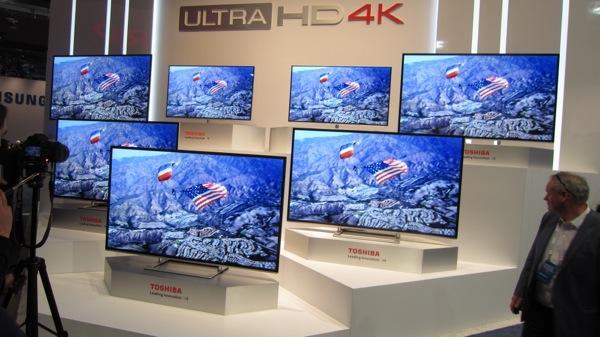CEA Expands Guidelines for Ultra HD TVs

The Consumer Electronics Association (CEA) has announced expanded guidelines for Ultra High-Definition (UHD or Ultra HD) TVs, monitors, and projectors. Devised and approved by CEA’s Video Division Board, “Ultra High-Definition Display Characteristics V2” are voluntary and build on the Ultra HD definition the association announced in October 2012.
The guidelines, which take effect in September, address picture quality and interoperability and are designed to provide clarity for consumers and retailers. A TV, monitor, or projector may be referred to as “Ultra High-Definition” if it meets the following minimum performance attributes:
- Display resolution – Has at least 8 million active pixels, with at least 3840 horizontally and at least 2160 vertically.
- Aspect ratio – Has a width to height ratio of the display’s native resolution of 16:9 or wider.
- Upconversion – Is capable of upscaling HD video and displaying it at UHD resolution.
- Digital input – Has one or more HDMI inputs supporting at least 3840 x 2160 native content resolution at 24p, 30p, and 60p frames per second. At least one of the 3840 x 2160 HDMI inputs shall support HDCP revision 2.2 or equivalent content protection.
- Colorimetry – Processes 2160p video inputs encoded according to ITU-R BT.709 color space and may support wider colorimetry standards.
- Bit Depth – Has a minimum color bit depth of eight bits.
- Ultra High-Definition capability – Meets all of the requirements of the CEA’s Ultra High-Definition Display Characteristics V2 (listed above).
- Video codec – Decodes IP-delivered video of 3840 x 2160 resolution that has been compressed using High Efficiency Video Coding (HEVC) and may decode video from other standard encoders.
- Audio codec – Receives and reproduces, and/or outputs multichannel audio.
- IP and networking – Receives IP-delivered Ultra HD video through a Wi-Fi, Ethernet, or other appropriate connection.
- Application services – Supports IP-delivered Ultra HD video through services or applications on the platform of the manufacturer’s choosing.
CEA is working with its member companies to develop a UHD logo to help consumers identify UHD products that meet the updated guidelines. The logo, expected to be available later this year, will be made available for voluntary use by manufacturers for product packaging, marketing materials, and promotional activities.
- Log in or register to post comments





























































